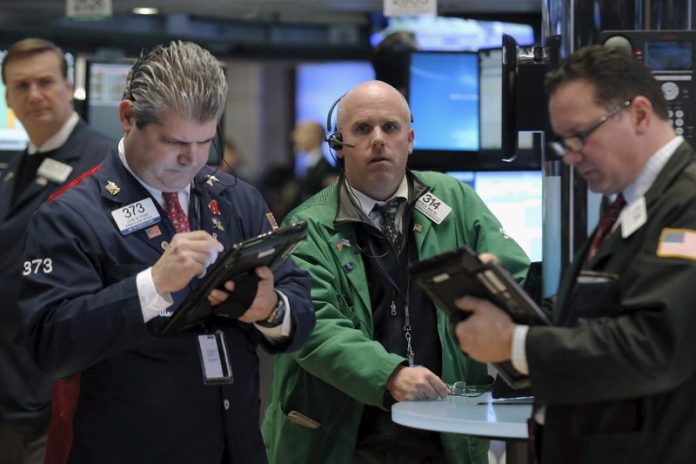By Davide Barbuscia
NEW YORK (Reuters) -Some investors see potential cracks in the U.S. bond market and red flags from recent whipsawing moves, saying the market is underpricing long-term fiscal risks and the danger posed by White House pressure on the central bank to cut interest rates.
U.S. bond markets sold off earlier this week as concerns about global fiscal health escalated, although the pain was quickly reversed and bonds rallied on weak economic data. The rebound continued on Friday, as a sharp slowdown in U.S. job growth raised the prospect that the Federal Reserve would embrace a faster pace of monetary easing than anticipated.
Investors, however, say they remain concerned about the health of the market.
“My concern is that we’re in a bit of a boiling-the-frog moment,” said Bill Campbell, portfolio manager for global bond strategy at bond firm DoubleLine, referring to the risks of institutional strength erosion, particularly recent pressure from the White House on the Fed to cut interest rates, as well as other factors such as a worsening U.S. fiscal trajectory.
Some measures of risk in the bond market show investors are accounting for the potential of an overly dovish Fed that could lead to higher inflation further down the line.
The U.S. Treasury term premium, a component of Treasury yields and a measure of the compensation investors demand for the risk of holding long-term U.S. debt, rose to 84 basis points on Tuesday, its highest level in more than three months, according to the latest available New York Fed data.
Expectations for inflation over the next decade, as measured by Treasury Inflation-Protected Securities (TIPS), hit 2.435% on August 27, the highest level in more than a month. They have since declined and were last at 2.36% on Friday.
“I’m wondering if what we’re seeing with the continuation of the widening in term premium, the bit of steepening in the curve that we’re seeing, is just more like cracks in the dam, and it just might happen one day that you get a bit more of a disorderly move,” Campbell said.
Yet market participants say it is hard to isolate the drivers behind the moves, citing a list of issues including pressure on the Fed to lower rates, the inflationary impact of President Donald Trump‘s tariffs, as well as concerns over the U.S. debt trajectory and rising global debt levels.
All those factors back trades that bet on a steeper yield curve, where long-term debt becomes less attractive than short-dated securities. A steepening curve typically signals that investors anticipate higher interest rates in the future because of stronger economic activity and higher inflation.
The curve also steepens when short-term Treasury yields decline on stronger expectations of an imminent easing in monetary policy, and longer-dated yields rise – or decline by a smaller amount than shorter-dated debt – on concerns that rate cuts could boost higher long-term inflation.
“I think the market has been relatively sanguine in terms of the pricing of those risks,” said Jonathan Cohn, head of U.S. rates desk strategy at Nomura. “There has certainly been some push into positioning steepeners or otherwise that would benefit in the event that these risks are realized, but the actual pricing is difficult to disentangle from the multitude of other risks that are kind of the same way,” he said.
‘EARLY PHASES’?
Trump has relentlessly criticized the Fed Chair Jerome Powell and the U.S. central bank’s Board of Governors for not lowering rates, which has raised investor concerns about political pressure influencing monetary policy. While the president has been demanding immediate and aggressive reductions in borrowing costs, he also has said the Fed could raise rates again if inflation rose.
White House spokesperson Kush Desai said Trump believes it’s time to cut rates to support employment and economic growth as inflation has been tamed. The push for a bigger rate cut at the Fed’s September 16-17 meeting was bolstered on Friday by data that showed a sharp slowdown in job growth in August.
DoubleLine’s Campbell warned that the administration’s pressure to lower rates could backfire by pushing up long-term yields. Those yields, which are determined by market conditions, influence key borrowing costs for consumers, such as mortgages and interest rates on credit cards and loans.
“This administration needs to be careful in their attempts to ease financial conditions and monetary conditions; overdoing it or pushing it to an extreme will have the opposite effect, and our biggest concern is that the back end of the curve more and more will reflect concerns about inflation expectations and the fiscal outlook,” he said, adding that DoubleLine is betting on a steeper yield curve.
Trump will soon get a chance to nominate a replacement for Powell, whose term as Fed chief expires next May.
The president last month nominated White House economic adviser Stephen Miran to the U.S. central bank’s seven-member board and then attempted to remove Fed Governor Lisa Cook from her post over mortgage fraud allegations, prompting her to file a lawsuit challenging Trump’s effort to oust her. Her ousting would open up a new seat on the Fed board.
Lawrence Gillum, chief fixed income strategist for LPL Financial, said the potential ouster of Cook and the possibility that the executive branch may get excessive influence over interest rate decisions will likely lead to higher term premiums and even steeper yield curves.
“I think we’re in the early phases of the bond market kind of trying to figure out what this is going to look like,” he said. “I think it’s really too early to make any sort of proclamation just yet.”
(Reporting by Davide Barbuscia; editing by Megan Davies and Paul Simao)

